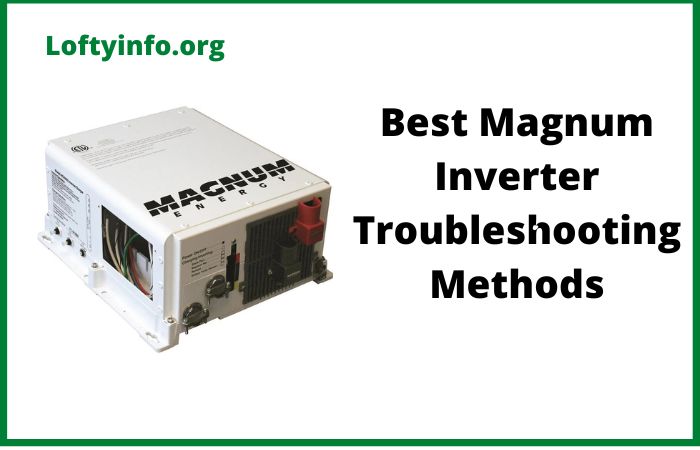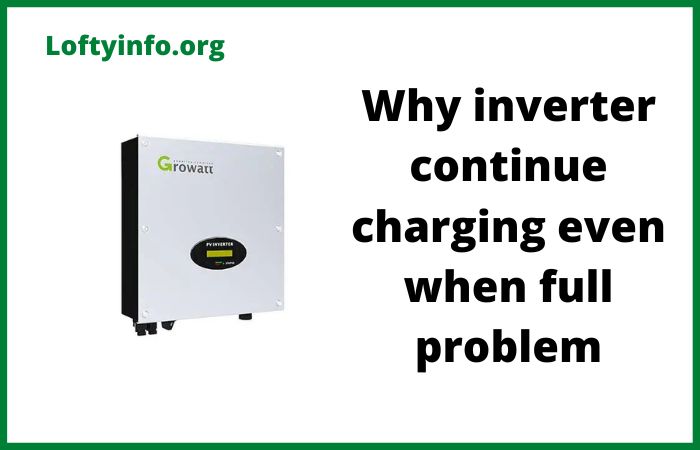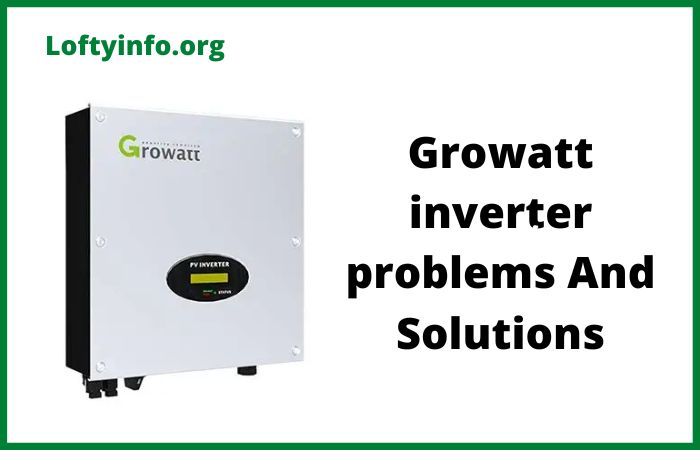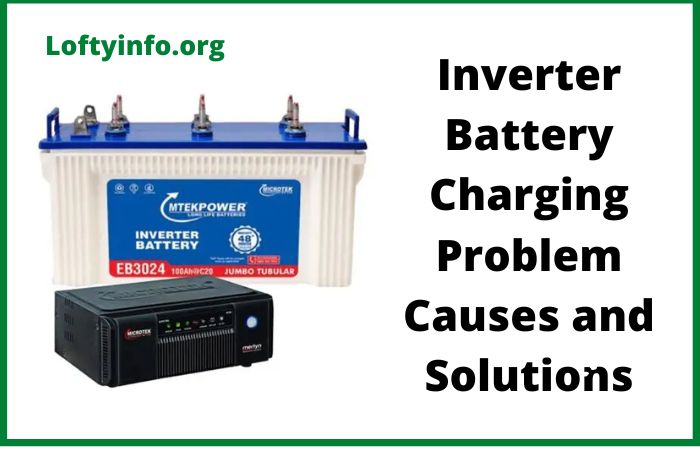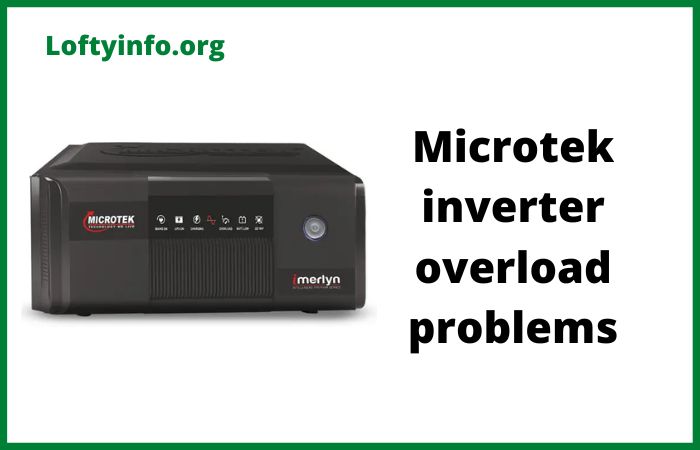Magnum Inverter Troubleshooting: Best Methods for Quick Problem Resolution
When your Magnum inverter starts acting up, knowing the right troubleshooting steps can save you time, money and frustration.
Whether you’re dealing with power issues, error codes or performance problems, this comprehensive guide covers the most effective Magnum inverter troubleshooting methods to get your system running smoothly again.
Magnum Inverter Troubleshooting Methods
Before diving into specific troubleshooting methods, it’s important to recognize that Magnum inverters while reliable, can experience various issues ranging from simple connection problems to complex internal faults.
The key to successful troubleshooting lies in systematic diagnosis and following proper safety procedures.
Method 1: Check Power Supply and Battery Connections
The most common cause of inverter problems stems from power supply issues.
Start your Magnum inverter troubleshooting by examining the DC input connections.
Step-by-step process:
- Turn off the inverter and disconnect AC loads
- Inspect battery terminals for corrosion, loose connections, or damage
- Measure DC voltage at the inverter input terminals using a multimeter
- Ensure voltage readings match your battery bank’s specifications
- Check for voltage drop across connections under load
- Tighten all connections to manufacturer specifications
What to look for:
- Corroded battery terminals (white or green buildup)
- Loose cable connections causing voltage drop
- Damaged or frayed DC cables
- Insufficient battery voltage (below 10.5V for 12V systems)
Poor connections can cause voltage drops that trigger low-voltage shutdowns or reduced performance in your Magnum inverter.
Method 2: Analyze Error Codes and LED Indicators
Magnum inverters use sophisticated diagnostic systems that communicate problems through LED indicators and error codes displayed on remote panels or monitoring systems.
Common Magnum inverter error codes and solutions:
- E01 – High DC Voltage: Check for overcharging conditions or faulty voltage regulation
- E02 – Low DC Voltage: Verify battery condition and charging system operation
- E03 – High Temperature: Ensure adequate ventilation and check cooling fans
- E04 – Overload: Reduce connected loads or check for short circuits
- E05 – Internal Fault: Requires professional service or component replacement
LED pattern interpretation:
- Solid green: Normal operation
- Flashing red: Fault condition requiring attention
- Alternating red/green: Warning state
- No lights: Power supply or internal failure
Document error codes and LED patterns as they occur, as intermittent issues can be challenging to diagnose during service calls.
Method 3: Verify Load Requirements and Capacity
Overloading is a frequent cause of Magnum inverter problems.
Understanding your power requirements versus inverter capacity is crucial for proper operation.
Load analysis procedures:
- Calculate total continuous load requirements
- Identify surge loads from motors and reactive devices
- Measure actual power consumption using a power meter
- Compare requirements against inverter specifications
- Check for power factor issues with certain loads
Common overload scenarios:
- Starting large motors without soft-start capabilities
- Running multiple high-power devices simultaneously
- Connecting loads with poor power factor
- Operating near maximum rated capacity continuously
Solutions for load-related issues:
- Implement load management strategies
- Use soft-start devices for motor loads
- Upgrade to higher capacity inverter if needed
- Install multiple inverters for redundancy and capacity
Method 4: Inspect Wiring and Electrical Connections
Faulty wiring can cause numerous problems in Magnum inverter systems from nuisance shutdowns to component damage.
Comprehensive wiring inspection:
- Examine all AC and DC connections for tightness
- Look for signs of overheating (discoloration, melting)
- Check wire sizing against current requirements
- Verify proper grounding throughout the system
- Inspect conduit and cable protection
AC wiring considerations:
- Ensure proper neutral and ground connections
- Verify correct wire gauge for circuit protection
- Check for loose connections in distribution panels
- Confirm proper bonding of equipment grounds
DC wiring best practices:
- Use appropriately sized cables for current and distance
- Minimize cable length to reduce voltage drop
- Employ proper fusing and circuit protection
- Maintain clean, tight connections at all termination points
Method 5: Test and Evaluate Battery Bank Performance
Battery problems often manifest as inverter issues.
Proper battery testing is essential for accurate Magnum inverter troubleshooting.
Battery testing procedures:
- Perform individual cell voltage measurements
- Conduct capacity testing under load conditions
- Check specific gravity in flooded batteries
- Monitor temperature during charging and discharging
- Assess internal resistance using specialized equipment
Battery-related symptoms:
- Premature low-voltage shutdowns
- Reduced runtime under load
- Slow charging or inability to hold charge
- Excessive heating during operation
- Voltage sag under load conditions
Battery maintenance essentials:
- Regular equalization charging for flooded batteries
- Proper ventilation for gas venting
- Maintaining appropriate electrolyte levels
- Cleaning terminals and applying anti-corrosion protection
- Following manufacturer’s charging profiles
Method 6: Examine Cooling and Ventilation Systems
Overheating is a major cause of inverter failures and reduced lifespan.
Proper thermal management is critical for reliable operation.
Cooling system inspection:
- Check cooling fan operation and cleanliness
- Verify adequate airflow around the inverter
- Clean dust and debris from heat sinks
- Monitor internal temperatures during operation
- Ensure proper mounting and spacing requirements
Ventilation requirements:
- Minimum clearances as specified by manufacturer
- Adequate intake and exhaust airflow paths
- Protection from direct sunlight and heat sources
- Consideration of ambient temperature effects
- Installation of additional cooling if necessary
Temperature-related troubleshooting:
- Use infrared thermometers to identify hot spots
- Check for blocked ventilation openings
- Verify fan motor operation and bearing condition
- Monitor thermal protection circuit operation
- Consider environmental factors affecting cooling
Method 7: Update Firmware and Check Configuration Settings
Modern Magnum inverters rely heavily on firmware and configuration settings for optimal operation.
Incorrect settings can cause various operational issues.
Firmware management:
- Check current firmware version against latest releases
- Follow proper procedures for firmware updates
- Backup existing settings before making changes
- Use only authorized firmware from Magnum Energy
- Document all configuration changes for future reference
Critical configuration parameters:
- Battery type and charging profiles
- Low and high voltage disconnect settings
- AC input voltage and frequency ranges
- Transfer switch timing and sensitivity
- Power sharing and load management settings
Configuration troubleshooting steps:
- Compare current settings against installation requirements
- Reset to factory defaults if corruption is suspected
- Use manufacturer’s configuration software when available
- Verify settings match actual system components
- Test operation after any configuration changes
Method 8: Perform Systematic Component Testing
When other troubleshooting methods don’t resolve the issue, systematic component testing helps identify specific failures within the inverter system.
Component testing approach:
- Isolate individual circuits and subsystems
- Use appropriate test equipment for accurate measurements
- Follow safety procedures for high-voltage components
- Document test results for analysis and service records
- Compare measurements against manufacturer specifications
Key components to test:
- Input and output transformers
- Power switching devices (MOSFETs, IGBTs)
- Control circuits and sensors
- Protection devices and fuses
- Communication interfaces and displays
Advanced diagnostic techniques:
- Oscilloscope analysis of waveforms
- Thermal imaging of internal components
- Insulation resistance testing
- Functional testing of protection circuits
- Load bank testing for performance verification
When to Call Professional Service
While many Magnum inverter troubleshooting procedures can be performed by qualified technicians, some situations require professional service:
- Internal component failures requiring specialized tools
- Warranty repairs that must maintain coverage
- Complex system integration issues
- Safety concerns with high-voltage components
- Recurring problems that defy standard troubleshooting
Preventive Maintenance for Long-Term Reliability
Regular maintenance prevents many common inverter problems:
- Monthly visual inspections of all connections
- Quarterly cleaning of cooling systems
- Semi-annual battery testing and maintenance
- Annual comprehensive system testing
- Prompt attention to any unusual operation
Conclusion
Effective Magnum inverter troubleshooting requires a systematic approach, proper tools and understanding of common failure modes.
By following these eight essential methods, you can quickly identify and resolve most inverter problems while maintaining safe operating practices.
Remember that proper installation, regular maintenance and prompt attention to warning signs are the best ways to prevent inverter problems.
When in doubt, consult with qualified professionals to ensure safe and effective repairs.
For complex issues or warranty concerns, always refer to Magnum Energy’s technical support resources and authorized service centers.
Proper troubleshooting not only solves immediate problems but also extends the life and reliability of your power system investment.
